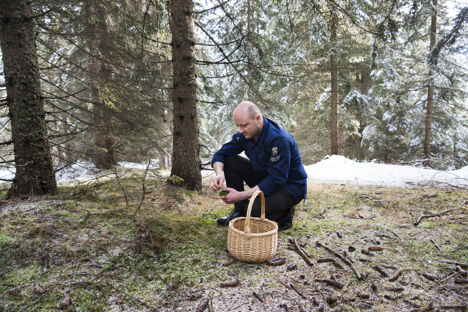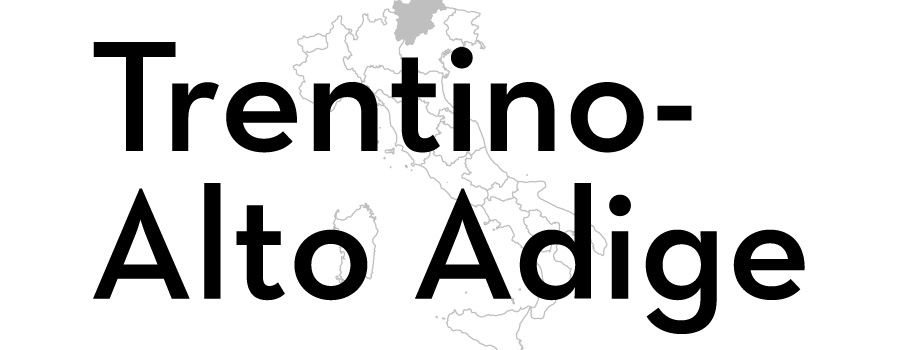
Mountain culture: foraging with Heinrich Schneider
Tom Riby heads to the South Tyrolean mountains with Michelin-starred chef Heinrich Schneider to discover some of the region's unique wild herbs and flowers.
View more from this series:
Italy's regional cuisineTraipsing through the country harvesting the bounty of nature on a foraging expedition has become a regular weekend activity for many dedicated foodies. This fun, free pastime hunting wild greens and edible fungi can introduce some novel flavours into the kitchen, helps cooks get up close and personal with Mother Nature and connects them with one of the greatest groundswells in global food trends. In Italy, there’s one man who is known for foraging above all else; Heinrich Schneider. As the head chef of the Michelin-starred Terra, he uses over fifty different ingredients found in the woods and mountains of South Tyrol in his dishes.
Northern Italy is one of the most exciting places in the world to carry out this wonderful pastime, particularly in South Tyrol. Home to the Dolomites and with more Michelin-starred restaurants than any other region in Italy, it’s a haven for foodies looking for something new. Whether you want to go out on a foraging trip yourself (always go with a guide so you don’t accidentally eat something poisonous) or want to leave it to the experts who will cook the local herbs and flowers with finesse, it’s an incredible place to visit.
There are around 130 species of plants that can be found in a healthy South Tyrolean mountain meadow, including many wild herbs that have played an important role in traditional folk medicine for centuries and now play a part in the dishes of this gourmet region. Chefs such as Heinrich Schneider, who grew up exploring the Dolomites, have always loved utilising wild herbs to expand the depths and flavours of food. He says there are over fifty different edible wild herbs in South Tyrol – here is a description of five of the most interesting ones featured on Heinrich’s menu.
The herbs of South Tyrol
Lady’s Mantle is a perennial herb with pleated leaves and very small yellow-green flowers that bloom from June to August. It is generally distributed all over South Tyrol, but flourishes particularly well in colder, high up areas. It also grows well near streams. The leaves have a mild, bitter taste, and can be shredded into salads, but they are also used to flavour bread, soups and medicinal drinks.
Native to parts of Asia and Europe, particularly in the Alps and Appennine mountains in Italy, silver birch trees have white or pale yellow bark with slender twigs. The leaves are generally dried and ground into a powder, then used as a seasoning or to flavour sauces, while the sap of the tree is turned into a drink now lauded for its health benefits. Heinrich, however, uses small birch twigs to create a birch-flavoured ice cream.
Wood sorrel has heart-shaped leaves and tiny flowers which can be anything from white and pink to red and yellow. While the flowers and roots are almost flavourless, the leaves have a pleasantly acidic taste due to the high levels of binoxalate of potash within them. This, combined with their delicate nature, means they’re often included in springtime salads, as their sharp taste makes a good substitute for citrus juice or vinegar.
This is an annual or perennial plant which is native to much of central and southern Europe. It has long, broad, triangular or diamond-shaped leaves, with very small flowers. It comes from the same family as spinach, and its leaves are used in much the same way. The shoots are eaten like asparagus, flower buds like broccoli and the seeds are an edible grain.
Icelandic moss is a lichen which looks like moss, thanks to its upright leafy appearance. In Iceland it is only occasionally used to make folk medicines, and is included in a few traditional dishes, but in South Tyrol has been known to be used in breads, porridges and soups. Heinrich uses Icelandic Moss to garnish his dish of Free-range egg with dried true morels and char caviar.
Plants must be fresh and clean
Leaves should be harvested when young and fully open and the fruits only when they are fully ripe
You should not pick plants with diseases or any that look mouldy
You should not pick herbs or plants when it is raining or during humid days
Do not pick herbs on the side of busy roads or in fertilised fields
Avoid herbs found in fields near dirty or polluted streams.
The ideal time to pick wild herbs is in the morning, but the plant shouldn't be wet with dew
Do not pick any rare or protected species



